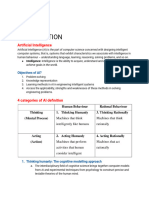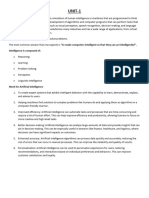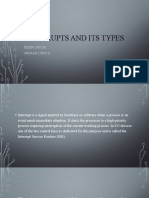0% found this document useful (0 votes)
8 views8 pagesUnit 1
The document provides an overview of Artificial Intelligence (AI), defining it as the creation of machines that can perform tasks requiring human intelligence through various approaches such as acting humanly, thinking rationally, and acting rationally. It outlines the foundational fields of AI, including mathematics, computer science, and psychology, and discusses the history of AI development from its inception in the 1940s to the rise of deep learning in the 2000s. Additionally, it explores AI agents, their environments, and the different types of agents based on their decision-making capabilities and learning abilities.
Uploaded by
Talukdar SumaiyaCopyright
© © All Rights Reserved
We take content rights seriously. If you suspect this is your content, claim it here.
Available Formats
Download as DOCX, PDF, TXT or read online on Scribd
0% found this document useful (0 votes)
8 views8 pagesUnit 1
The document provides an overview of Artificial Intelligence (AI), defining it as the creation of machines that can perform tasks requiring human intelligence through various approaches such as acting humanly, thinking rationally, and acting rationally. It outlines the foundational fields of AI, including mathematics, computer science, and psychology, and discusses the history of AI development from its inception in the 1940s to the rise of deep learning in the 2000s. Additionally, it explores AI agents, their environments, and the different types of agents based on their decision-making capabilities and learning abilities.
Uploaded by
Talukdar SumaiyaCopyright
© © All Rights Reserved
We take content rights seriously. If you suspect this is your content, claim it here.
Available Formats
Download as DOCX, PDF, TXT or read online on Scribd
/ 8






















































































